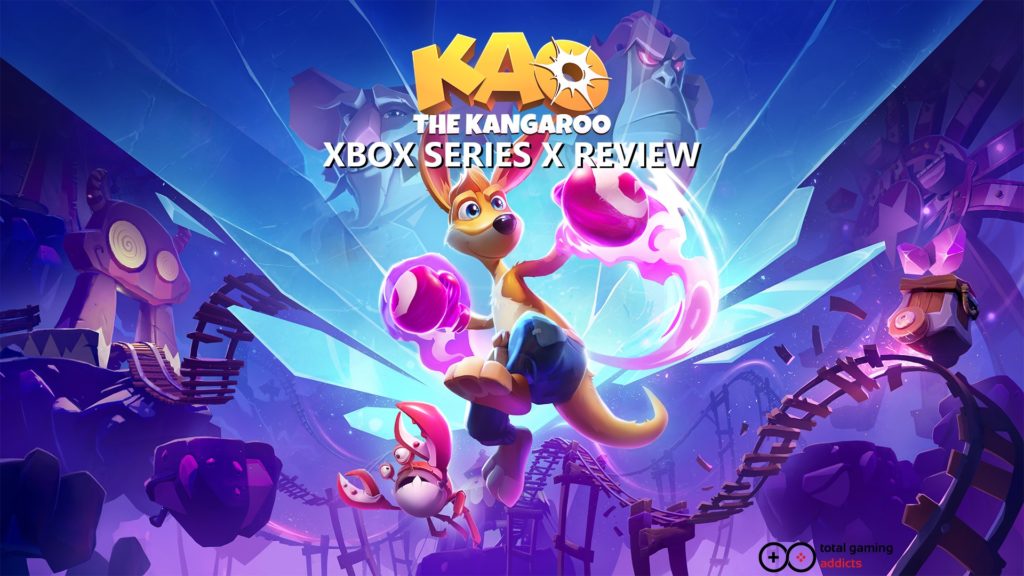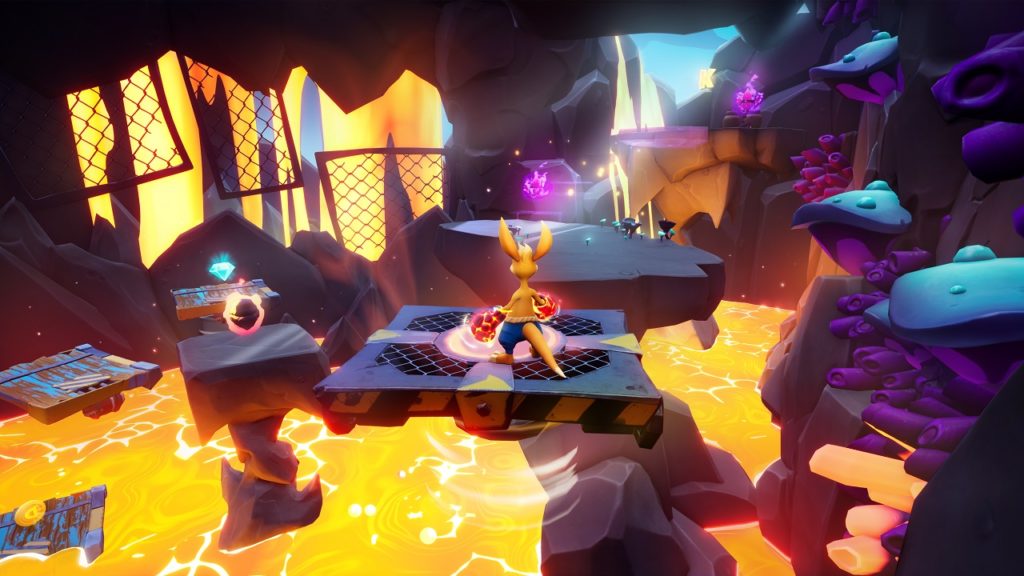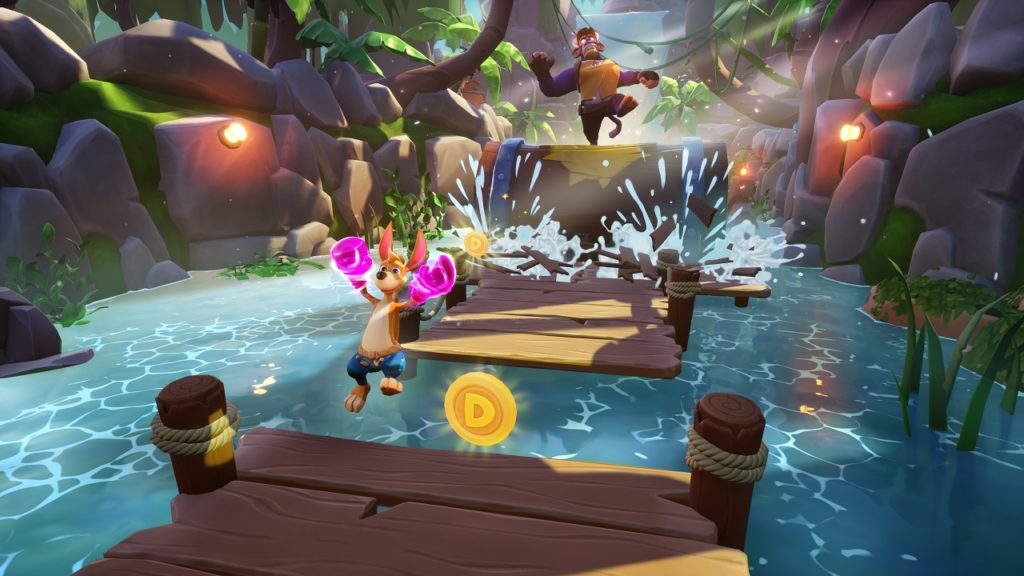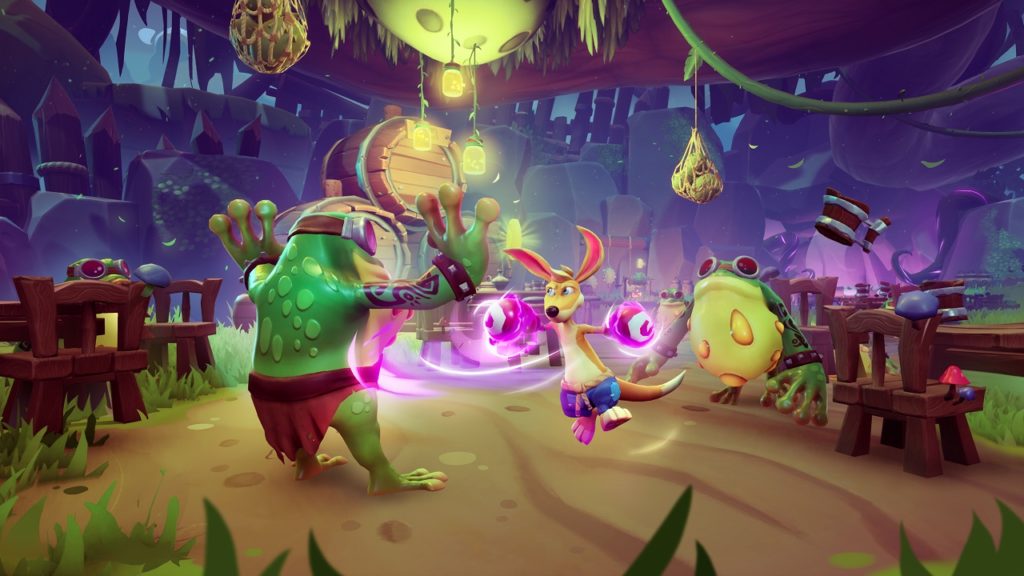Kao may not bring anything new to the table, but it’s a polished and enjoyable adventure that’s ideal for younger gamers or those looking for some nostalgia

Kao the Kangaroo Review
When I was younger, I absolutely loved 3D action-adventure platform games like Gex, Spyro, Jak and Daxter and Crash Bandicoot. I hadn’t played any for a long time when I stumbled across Super Lucky’s Tale on Game Pass – two full playthroughs including the remastered version showed me I still have a love for this kind of game, even into my forties, and it’s a love now shared with my young children.
When I saw the Kao announcement, I was eager to play it, though I’ll admit to the originals having completely passed me by. The developers promised gameplay that harks back to the golden era of platformers but with a modern twist, and I was very excited to play it with my kids. So, is Kao the Kangaroo a remnant of an era best viewed through rose-tinted glasses, or does it manage to keep the original charm while catering to modern expectations of quality?
You begin in a hub world, Hopalloo island, with gates leading to the individual levels in classic fashion. Straight away I was struck by the beautifully vibrant level design. Everything is bold, bright and colourful, and sure enough, it’s instantly reminiscent of the games I used to love. The starting world has a tropical island vibe, but you’ll progress through to jungle-themed levels, frozen mountains and obligatory lava-filled caves.

After you’ve gotten used to the basic controls thanks to well-paced tutorials, you can head out into the world. Kao is the story of a plucky young kangaroo who is trying to discover what happened to his father, who went missing on an adventure of his own. It’s not the most original of stories for sure, but it carries the game along nicely. There’s a colourful cast of characters to meet and interact with, and they are reasonably well voice acted if a little corny at times. There are a lot of attempts at referential humour, but many of the references are dated or will be too obscure for younger audiences.
The level design is good, particularly in the later levels where there are often multiple routes and more complex platforming sections. Varied biomes keep the levels feeling fresh as you progress, but Tate Multimedia has also done a great job of making each level layout feel unique. I especially enjoyed hunting for the secret areas which contained many of the collectables there are to find on each level.
Coins litter the landscape and are held in smashable boxes, and you can use these to purchase extra lives, health upgrades and clothes for Kao. Each level also has KAO letters to discover, runes to find (which unlock the gates to new levels), and also diamonds to collect. I don’t know if I missed something, though, as the diamonds don’t seem to have any purpose besides being an arbitrary extra collectable. You can’t spend them in the shop and there’s no achievement related to collecting them, which seems a bit of an oversight.
Kao’s USP is his enchanted boxing gloves, which are possessed by a wise-cracking entity (that I’d very loosely describe as a kid-friendly version of Venom, but your interactions with it are criminally underused). Kao can use these gloves for punching enemies (duh), but they can also be imbued with fire, ice and wind enchantments, allowing you to clear cobwebs, activate moving platforms or melt through ice blocks, for example.
These add a little bit of variety to proceedings, but you rarely have to go out of your way to find the necessary elemental charges to power up the gloves and make progress. More often than not, if you need a special glove ability to proceed, the charges for it will be right next to the obstacle. I would have liked it if they had added some more complex puzzle-solving elements that involved the glove power-ups, but it kept the gameplay flowing and it never became frustrating for my pair of junior gamers.

The controls are tight and well-implemented, which is important when it comes to the platforming sections. I was caught out a couple of times at first, as Kao carries a little bit of momentum with his jumps, but once I was expecting it I was making mostly accurate jumps. I say mostly, because where older examples of the genre place your shadow directly underneath you, which assists in your jumps, in Kao the light source can be offset, so the shadow isn’t always a clear indicator of where you’ll land. Fortunately, the camera is fully adjustable so you can swing it around to help judge distances and angles better.
You’ll frequently be leaping from platform to platform, dodging traps and jumping spikes, but the level design neatly avoids the pitfall of being repetitive. There are a few more challenging platform sequences, but early on there are plenty of recovery points to get you back on track if you misjudge a jump. These proved very useful for my kids, who are still new to the genre and would have been disheartened if they were constantly failing.
This gentle learning curve may feel a bit slow for experienced gamers, but it’s ideal for younger players. The further you get into the game the harder the platforming gets, but that’s comparative to the early stages. It’s great for younger gamers, but although I enjoyed it I never felt like my skills were being put to the test until right at the end. I had fun finding and completing the Eternal Wells, though, which are brief but challenging mini-levels that either involved some platforming or fighting mini-hordes of enemies.

Combat is simplistic but fun. There’s a decent variety of enemies but they go down a little too easily, so although there are a few different attacks at your disposal, you can generally just wade in and mash a simple attack combo to get through them. It varies a little when you add flying enemies or those with ranged attacks, and you can use a jumping attack to deflect projectiles back at enemies or ground-pound to strike and stun enemies. The addition of a dodge roll is useful when tackling larger groups of enemies, and chaining enough moves together allows you to unleash a powerful finisher, so although it doesn’t bring anything truly original to the genre, there’s enough going on to keep it fun.
The boss battles show a bit more creativity, and even though there are only four main bosses, they provide a welcome change. Whether I was dodging mini-tornados or bashing barrels back at my aggressor with a well-timed jump attack, the extra variety beyond basic button bashing meant I enjoyed these classically inspired boss fights
There’s not much replayability beyond mopping up the collectables, unfortunately. This definitely feels like a game that would have benefitted from having more difficulty options as, aside from a couple of early stupid deaths, once you’ve upgraded your life bar it’s unlikely you’ll be dying very often. There’s not really any way of adapting the difficulty of the platforming, but having a harder difficulty that increased the frequency and damage of enemy attacks could have added some much-needed challenge for seasoned gamers.
Summary
Despite the lack of any real challenge, Kao the Kangaroo is a very enjoyable game, even if it is a little short; You can comfortably complete it, along with finding all of the collectables, in around ten hours. Although in comparison to some of the big-name contenders it could be seen as a bit brief, I found the pacing to be good and importantly it never became tedious or repetitive. If you have younger kids it’s a great introduction to the genre, but even older gamers looking for a bit of a nostalgia kick will find something to enjoy here. Kao may not bring anything new to the table, but in its aim of harking back to the golden age of platforming games, it’s a resounding success.

